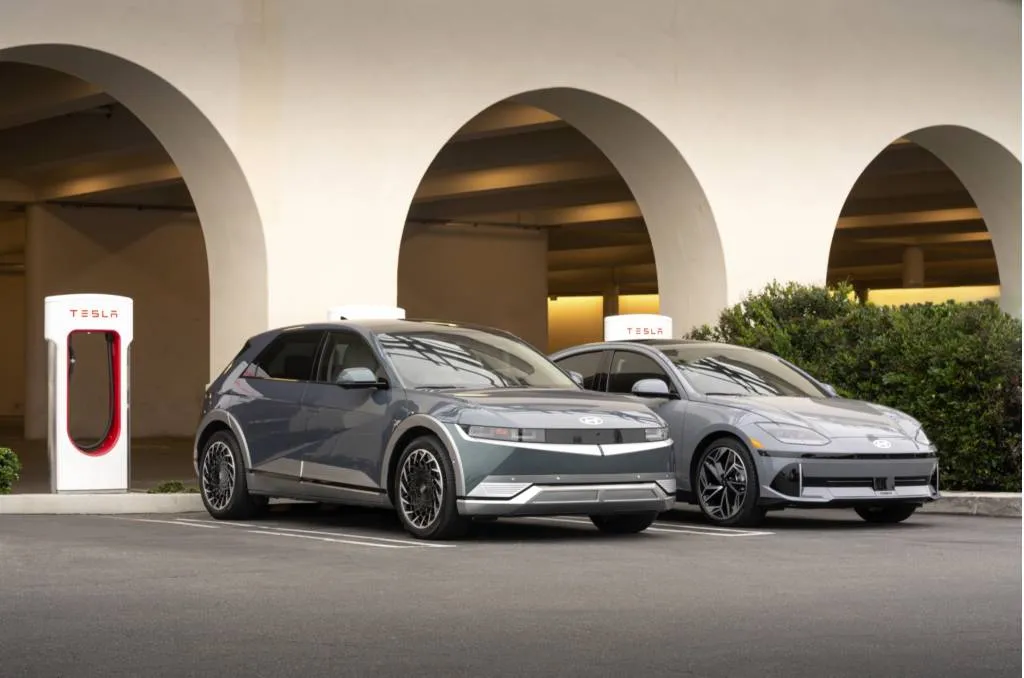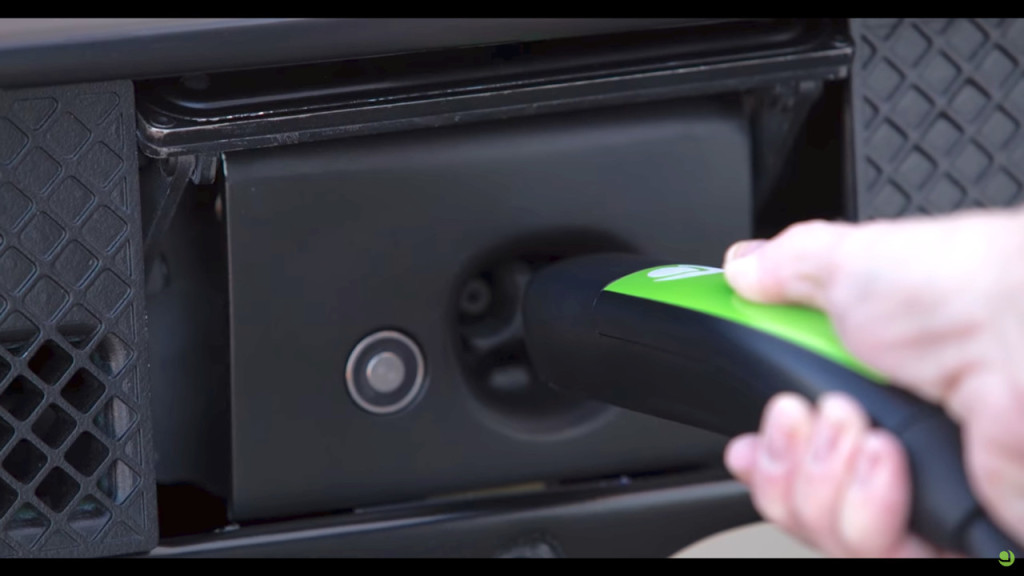Tesla's North American Charging Standard (NACS) DC fast-charging connector is now living up to its name, becoming a true standard rather than just a hardware design.
SAE International on Tuesday released the technical information for standardization of the NACS connector. Known as SAE J3400, the finalized standard comes just six months after the SAE announced plans to make the Tesla-designed connector into a real standard, rather than just the specification created by the automaker. That's much faster than the usual pace of the industry.

Hyundai at Tesla Supercharger
Tesla started pushing hard for other brands to use its NACS connector late last year. But the introduction of the J3400 standard makes that more feasible by establishing a framework companies can use for manufacturing and future interoperability of charging equipment. The move was applauded by the Biden administration.
"Open standards are crucial to ensuring that every EV can charge at any station,” Gabe Klein executive director of the administration's Joint Office of Energy and Transportation, said in a statement.

Aptera using Tesla NACS connector
Adoption of a standard that can be used by all automakers and charging equipment manufacturers also lays the foundation for allowing NACS connectors along the federal EV charging network, which positions 150-kw chargers every 50 miles. Funding comes from the Bipartisan Infrastructure Law, which includes $7.5 billion for 500,000 chargers nationwide.
The Volkswagen Group also chose the day of the rollout of SAE J3400 to announce its switch to the NACS connector. VW, Audi, Porsche, and Scout models will get NACS ports starting in 2025, with access to the Tesla Supercharger network that year, according to a press release. VW's announcement leaves Stellantis as the only major automaker in the North America market not committed to the NACS charge port.












